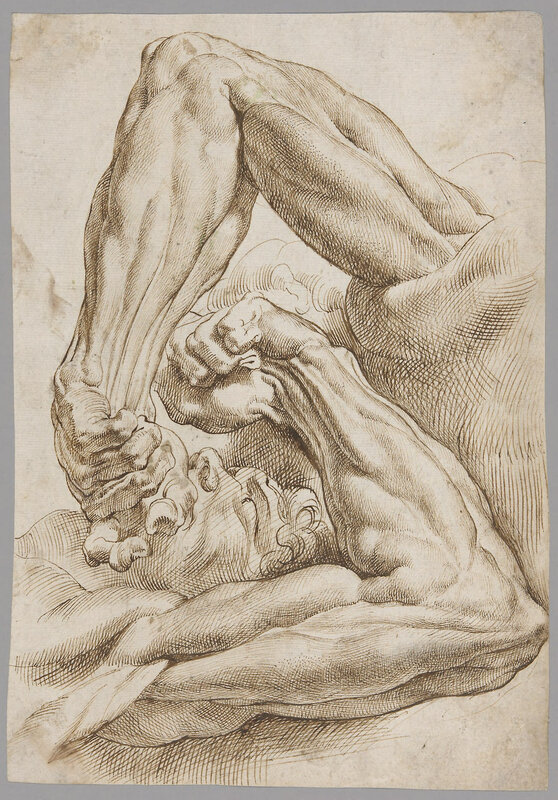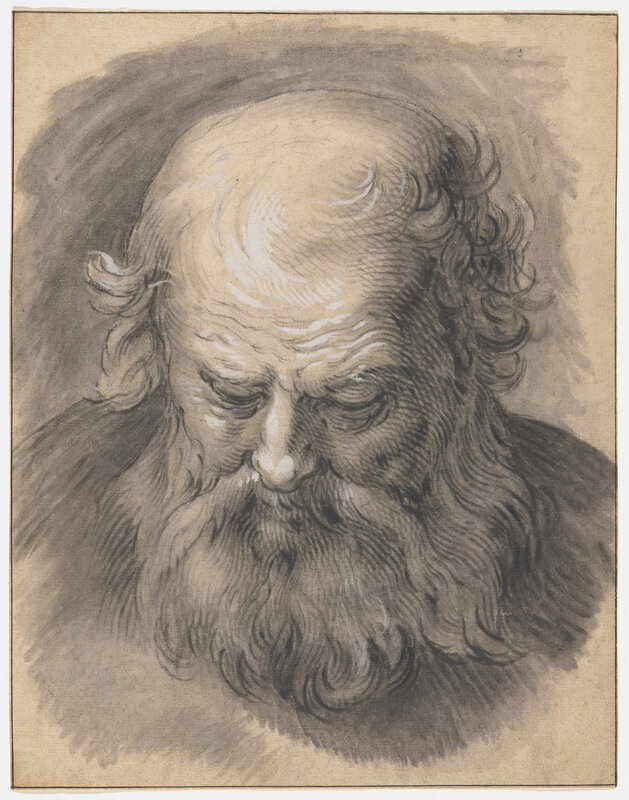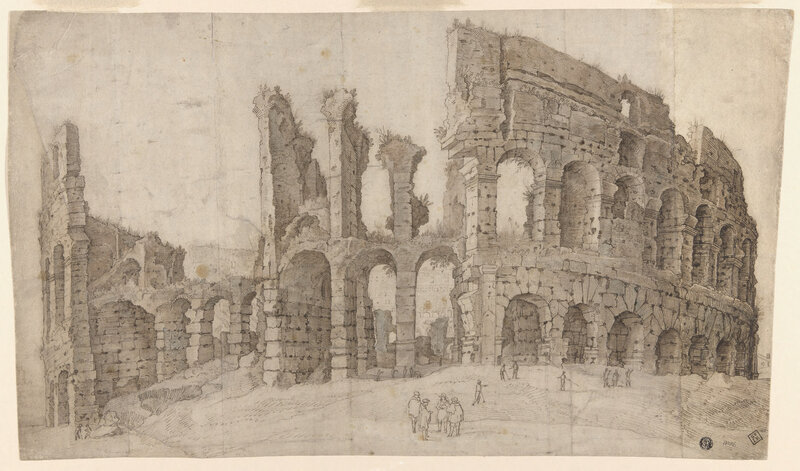Exhibition at the Art Institute of Chicago exhibits Dutch and Flemish drawings
Peter Paul Rubens (Flemish, 1577-1640), A Sheet of Anatomical Studies, 1600-1610. Pen and brown ink on ivory laid paper, 271 × 188 mm. The Art Institute of Chicago, Regenstein Acquisition Fund.
CHICAGO, IL.- The Art Institute of Chicago presents Rubens, Rembrandt, and Drawing in the Golden Age, on view from until January 5, 2020. This exhibition reflects a unique and comprehensive effort by the Art Institute to study and interpret its holdings of Dutch and Flemish drawings. The project is a culmination of a multi-year collaborative interdisciplinary initiative between conservation and curatorial departments within the museum. The exhibition has approximately 120 works on view and includes several new acquisitions that enhance a collection which was developed over nearly one hundred years.
Drawing reached one of its pinnacles in the Netherlands during the 17th century—a period commonly known as the Golden Age. While early modern Dutch and Flemish art typically focus on the paintings created during this time, this exhibition constructs an alternative narrative, casting drawings not in supporting roles but as the main characters. Featuring works by Rembrandt van Rijn, Peter Paul Rubens, Hendrick Goltzius, Gerrit von Honthorst, Jacques de Gheyn II, and many others, the show traces the development of drawing in this period, exploring its many roles in artistic training, its preparatory function for works in other media, and its eventual emergence as a medium in its own right.
Rembrandt van Rijn (Dutch, 1606-1669), Seated Female Nude, 1660-1662. Pen and brown ink and brush and brown wash, with subtractive highlights (scraping) and touches of opaque white watercolor corrections, on ivory laid paper, laid down on cream laid card, 212 x 175 mm (primary/secondary supports). The Art Institute of Chicago, Clarence Buckingham Collection.
The 17th century brought change to the northern and southern Netherlands, including political upheaval and scientific innovation. The effects of these changes had a great impact on art—what kind of art was in demand, who could and did produce art, and where and how art was made. Most artists in 17th-century Netherlands chose their career through family connections, training with a relative who worked in an artistic trade, although there are significant exceptions to this trajectory—Rubens was the son of a lawyer and Rembrandt the son of a miller.
Abraham Bloemaert, Rubens, and Rembrandt supervised the three most important workshops of the period, overseeing the development of dozens, if not hundreds, of students. In these workshops, learning to draw was essential. The ability to accurately depict the human face and body was critical to an artist’s success and was especially important for those who aspired to create history paintings—the genre considered most prestigious because it relied on literary sources and often required portraying multiple figures in complex and dramatic scenes.
Abraham Bloemaert (Dutch, 1566-1651), Study of the Head of a Bearded Man, 1595-1605. Black chalk, with brush and black chalk wash, heightened with opaque white watercolor, over touches of charcoal, on tan laid paper, 372 x 290 mm. The Art Institute of Chicago, Robert I. and Leah C. Hamman and Prints and Drawings Purchase Funds.
Rembrandt, more than other artists of this period, embraced life drawing. Most notably, he pioneered the collective study of the female nude—a commonplace practice today, but one that challenged the bounds of decency in the 17th century. Studying the live figure increasingly became standard practice in the Netherlands during this period, but it was generally restricted to drawing male models, since prevailing cultural norms made it difficult for artists to find women to pose for them, especially in the nude. Among the most celebrated of all Rembrandt’s drawings is a rare study of a female nude, which is featured in this exhibition. An emotive and striking work, it highlights the importance for artists of the period to learn to draw the female figure.
Although drawings in the 17th century served many purposes—as reference materials, studies for future paintings, preparatory designs for prints—they also emerged as independent works of art, bought, commissioned, and collected by wealthy merchants. Produced in a broad range of media, including chalk, ink, and watercolor, the drawings in this exhibition are captivating examples of artistic skill and imagination. Together they provide a new view of the creativity and working process of Netherlandish artists in the 17th century and reveal how drawings came to be the celebrated works of art we know them to be today. The Art Institute’s collection of Dutch and Flemish drawings - one of the museum’s best kept secrets - has never been exhibited together before or understood and interpreted as a coherent group. This exhibition and its beautiful accompanying catalogue reveal, for the first time, the remarkable strength and importance of our holdings in this area.
Nicolas Beatrizet (French, 1515-after 1565), Laöcoon, 1540/65. Engraving in black on pieced, cream laid paper, 412 × 294 mm. The Art Institute of Chicago, The Wallace L. DeWolf and Joseph Brooks Fair Collections.
Circle of Willem van Nieuwlandt, II (Flemish, c.1584-after 1635), Ruins of the Coliseum in Rome, c. 1600. Inscribed verso, center, in pen and brown ink: "No 731–13". Pen and brown ink, with brush and brown and gray wash, on pieced cream laid paper, 353 × 613 mm. The Art Institute of Chicago, The Leonora Hall Gurley Memorial Collection.
Hendrick Goltzius (Dutch, 1558–1617), Two Male Heads after the Antique, the Sons of Laocoön, c. 1605. Red chalk on ivory laid paper. The Art Institute of Chicago, Regenstein Acquisition Fund.
Hendrick Avercamp (Netherlandish, 1585-c.1633), Two Old Men beside a Sled Bearing the Coats of Arms of Amsterdam and Utrecht, 1620-1633. Inscribed verso, center, in pen and brown ink: "20010"; lower left, in graphite: "brbs/ 3180" (in oval); in graphite: "Avercamp"; lower left, in pen and ink: "2074"; center in graphite: "coll. Ten Cate cat. 1955 # 173". Opaque and translucent watercolors, with pen and brown ink, over graphite, on cream laid paper, 183 x 300 mm. The Art Institute of Chicago, Clarence Buckingham Collection.
Aelbert Cuyp (Dutch, 1620-1691), View of IJsselmonde Seen Across the New Maas, c. 1640. Inscribed verso, lower left, in graphite: "£*"; lower left, in graphite: "£106"; center, in blue pencil: "405" (in circle); lower right, in graphite: "tor—" (partially erased). Brush and black and yellow ochre watercolors, over black chalk, on ivory laid paper, 145 x 190 mm. The Art Institute of Chicago, Worcester Sketch Fund.
Jan Both (Dutch, c. 1618-1652), Italian Landscape with a Bridge, 1642/52. Inscribed recto, lower left, in pen and brown ink: "3099". Pen and brown ink, with brush and gray wash, over traces of black chalk, on ivory laid paper; verso, slight sketches of leaves in pen and brown ink, Pen and brown ink, with brush and gray wash, over traces of black chalk, on ivory laid paper; verso, slight sketches of leaves in pen and brown ink. The Art Institute of Chicago, Olivia Shaler Swan Fund.
Rembrandt van Rijn (Dutch, 1606-1669), Noah’s Ark, c. 1660. Pen and brown ink and brush and brown ink wash on cream laid paper, 203 x 248 mm. The Art Institute of Chicago, Clarence Buckingham Collection.
Godfried Maes (Flemish, 1649-1700). Head of Medusa, 1680. Signed and dated lower center, in pen and brown ink: "G Maes (twice): del: / 1680". Pen and brown ink, with traces of black chalk, on cream laid paper,245 × 181 mm. The Art Institute of Chicago, Prints and Drawings Purchase Fund.
Herman Henstenburgh (Dutch, 1667-1726), Two Grasshoppers, c. 1685. Inscribed verso, in pen and brown ink: fragment of auction ledger. Watercolor and opaque watercolor, with pen and brown ink, over traces of graphite, on vellum, laid down on ivory laid paper, with pen and brown ink on paper verso, 119 x 143 mm (primary/secondary supports). The Art Institute of Chicago, Everett D. Graff Endowment.

/https%3A%2F%2Fprofilepics.canalblog.com%2Fprofilepics%2F1%2F0%2F100183.jpg)
/https%3A%2F%2Fstorage.canalblog.com%2F03%2F02%2F119589%2F96711876_o.jpg)
/https%3A%2F%2Fstorage.canalblog.com%2F11%2F31%2F119589%2F94773502_o.jpg)
/https%3A%2F%2Fstorage.canalblog.com%2F20%2F83%2F119589%2F94772815_o.jpg)
/https%3A%2F%2Fstorage.canalblog.com%2F26%2F72%2F119589%2F75604929_o.jpg)
/https%3A%2F%2Fstorage.canalblog.com%2F59%2F60%2F119589%2F26458628_o.jpg)














/http%3A%2F%2Fstorage.canalblog.com%2F85%2F50%2F119589%2F129294982_o.jpg)
/http%3A%2F%2Fstorage.canalblog.com%2F89%2F67%2F119589%2F111487693_o.jpg)
/http%3A%2F%2Fstorage.canalblog.com%2F38%2F53%2F119589%2F93476787_o.jpg)
/image%2F1371349%2F20240322%2Fob_e601c4_1-bruegel-temptation-of-st-anthony.jpg)